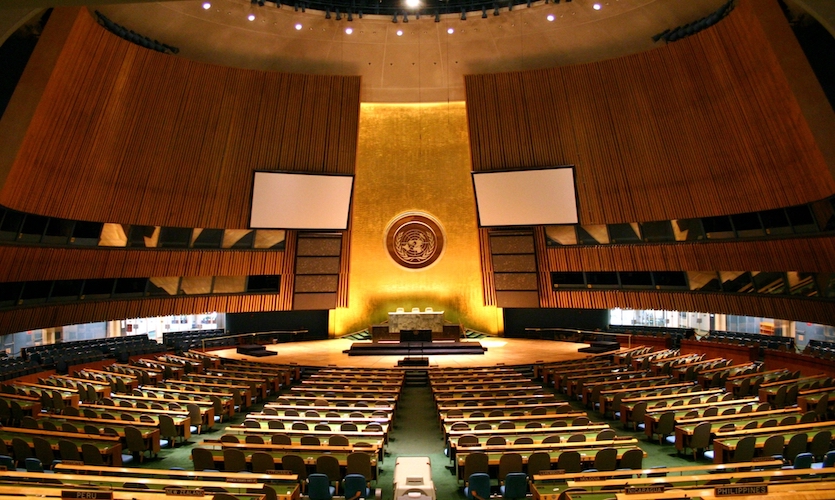On Tuesday, the World Health Organization (WHO) warned that more than 37 million people living in the Horn of Africa are facing acute hunger and severe drought, which has consequently led to the outbreak of several infectious diseases. Furthermore, the organisation has given a dire warning that the care of critically malnourished children will be “severely impacted”, and result in high child mortality rates.
The UN agency subsequently also released a funding appeal for US$ 123.7 million to combat the unprecedented food crisis, and carry out “life-saving work” in the region. The Horn of Africa is a group of countries in East Africa, which includes, Djibouti, Somalia, Sudan, South Sudan, Ethiopia, Uganda, and Kenya. The WHO appeal attributed this crisis to factors like climate change, the COVID-19 pandemic, a rise in food prices (partly due to the conflict in Ukraine), and years of conflict and instability, adding that this has led the region to become a “hunger hotspot”, leading to “disastrous consequences” for the health and lives of its people.
WHO Incident Manager Sophie Maes described the drought in several regions and said, “There are now four seasons where the rain didn’t come as predicted and a fifth season is estimated to also fail. Places where there is drought the problem keeps worsening and worsening.” On the other hand, she said that other places like South Sudan have seen three years of consecutive flooding, which has led to at least 40 percent of the country being flooded. She also warned that moving forward the situation is going to worsen.
Reportedly, over 37 million people in the region are projected to reach the third level of the Integrated Food Security Phase Classification scale (IPC3) and higher in the upcoming months. The IPC’s acute food insecurity classification is a five-point scale that provides information on short-term objectives to prevent, mitigate or decrease severe food crises which affect people’s lives and livelihoods. The classification places the Horn of Africa at level three, which is “Crisis”, with phases four and five being “Emergency” and “Catastrophe/Famine”, respectively. This indicates that the population is in crisis, and is forced to meet minimum food needs by depleting essential livelihood assets or through other crisis-coping strategies. This is amid the region facing one of the worst hunger crises in the last 70 years.
The effects of the drought are particularly severe in the eastern and southern regions of Ethiopia, eastern and northern Kenya, and southern and central Somalia, as per the report. This is in addition to the acute food insecurity in South Sudan, which has reportedly reached its “most extreme” level since the country gained its independence in 2011, with 75 percent (8.3 million) of its population dealing with this crisis.
The WHO has also warned that inaction toward this crisis could have dire consequences. “Acute malnutrition leads to increased migration as populations move in search of food and pasture,” said the UN agency. Consequently, they believe that disruptions like large-scale displacement due to such an unprecedented crisis often result in deteriorating hygiene and sanitation, and outbreaks of infectious diseases like cholera, measles, and malaria rising, which is already apparent in the region. Furthermore, with low vaccine coverage and insufficient health services, the spread of these diseases could lead to widespread increase in the number of outbreaks in the country, as well as across borders.
As per the WHO, the lack of food security also puts people at risk, as they are forced to make the impossible choice between food and healthcare, while nutritional deficiencies make them more vulnerable to disease. The UN agency also draws attention to the children who are particularly vulnerable to malnutrition and diseases that can be fatal. Dr Jaouad Mahjour, the WHO Assistant Director-General for Emergency Preparedness, echoed the warning and said, “The situation is already catastrophic, and we need to act now… We cannot continue in this underfunding crisis.”
WHO’s Funding Appeal In Response To The Crisis
As mentioned earlier, to respond to the crisis faced by the countries in the Horn of Africa, the WHO has released an appeal for funds, also indicating that they have already sent US$ 16.5 million from its Contingency Funds for Emergencies. The amount sent will reportedly ensure that people have access to healthcare, children with severe malnutrition receive treatment, and outbreaks of infectious diseases are detected, prevented and responded to.
“Hunger is a direct threat to the health and survival of millions of people in the greater Horn of Africa, but it also weakens the body’s defences and opens the door to disease,” said WHO Director-General Dr Tedros Adhanom Ghebreyesus. He added, “WHO is looking to the international community to support our work on the ground responding to this dual threat, providing treatment for malnourished people, and defending them against infectious diseases.”
According to the appeal, the US$ 123.7 million will be used towards “urgent measures to protect lives including shoring up the capacity of countries to detect and respond to disease outbreaks, procuring and ensuring the supply of life-saving medicines and equipment, identifying and filling gaps in health care provisions, and providing treatment to sick and severely malnourished children”.
The statement also gives a dire warning that the situation is expected to worsen, due to speculations of another rainy season failing. This comes amid reports of rise in gender-based violence, and subsequent risk of trauma and injuries, in addition to reports of avoidable deaths, particularly among children and women in childbirth. Furthermore, the WHO indicated that six out of the seven countries are facing a measles outbreak due to low vaccination rates, while they are simultaneously trying to combat cholera and meningitis outbreaks. The region has already seen an estimate of 4.2 million refugees and asylum seekers. Meanwhile, the UN agency has indicated that the number is expected to rise in the upcoming months.
Growing Insecurity In Kenya
Kenya is part of the Horn of Africa, and is traditionally perceived as a relatively stable diplomatic and humanitarian hub of the region. However, due to growing insecurity fueled by desertification and several humanitarian crises, the country is reportedly experiencing growth in violence.
There have allegedly been several killings in the northern region. This is in addition to the dozens of people including two chiefs, allegedly murdered in Marsabit, 160 miles north of Isiolo town, and eight others in one attack, in May 2022. This incident was followed by others over the past couple of months, prompting immediate action by Kenya’s police and other forces.
“The 10 were arrested on suspicion of having committed the crime on the Marsabit side, and then fled to Isiolo to escape arrest. We are investigating to establish if they were involved in the killing of the chiefs and livestock theft cases,” said Isiolo County Commissioner Geoffrey Omoding to the local media, earlier this year.
Furthermore, Kenya is in the midst of its worst drought in 40 years, as per the country’s government and the UN. Reportedly, more than four million people are facing food insecurity, and 3.3 million people do not have enough water to drink. A village in the northern region named Ileret, where despite harsh conditions people have managed to reportedly thrive, lost approximately 85 percent of its livestock. They relied on pastures from the savannahs which emerge after it rains, however, this has not happened for over two years now.
The cost of food in Ileret has also skyrocketed since the Russian invasion of Ukraine, as the latter was responsible for exporting 11.5 percent of the world’s wheat, and for 17 percent of the world’s export market of maize. Maize flour is a staple in Kenya, the price for which has doubled for most people in the country. Furthermore, even the UN’s World Food Programme (WFP) intervention seems unlikely to be helpful as it reportedly procures 40 percent of its wheat from Ukraine.
“Any time you get people who are hungry and without other options you’ve got a security situation. Northern Kenya we’re bordered by South Sudan, Ethiopia, and Somalia, all of which are still in the grip of conflict that spews small arms into this ecosystem, so you’ve got a lot of weapons up here and increasing hunger so, yeah, I’d say that’s an increasing security concern,” said Frank Pope, CEO of a charity named Save the Elephants, based in Kenya.
Read more: UN Agency To Cut Back Food Assistance For 1.7 Million People In South Sudan
A Crisis In The Making
This crisis follows reports published by several aid groups and the UN itself. For months, several aid groups sounded the alarm about the worsening conditions as a result of prolonged drought and rising food prices. Reportedly, about 20 million people across the region will go hungry in the month of September. In Somalia, at least seven million people are at risk of facing “catastrophic famine” in the next two months without any aid, said a report by the International Rescue Committee (IRC).
Furthermore, the UN agency for children – UNICEF – said that by the end of this year, at least 600,000 children in parts of Ethiopia will require treatment for severe malnutrition. Together, Kenya, Ethiopia and Somalia represent two percent of the world population, but 70 percent of extreme food insecurity, as communicated by IRC president David Miliband, in a speech at the Center for Strategic and International Studies, a think tank based in Washington.
Earlier this year, in July, an UN-backed report issued by the region’s Inter-Governmental Authority on Development – the IGAD Regional Focus on Food Crises report – also raised similar warnings on the escalating food insecurity and malnutrition, particularly in Ethiopia, Kenya, Somalia, South Sudan, and Sudan. The study confirms that over 50 million people in Eastern Africa will face acute food insecurity this year.
“Now more than ever, we must implement short-term livelihood-saving responses with long-term resilience building aimed at addressing the root causes of food crises in our region,” said the Food and Agriculture Organization’s (FAO) subregional coordinator for Eastern Africa, Chimimba David Phiri. The report indicated that approximately 300,000 people in Somalia and South Sudan are projected to face the highest level of the IPC scale – level 5 – amid the risk of famine in eight areas of Somalia.










